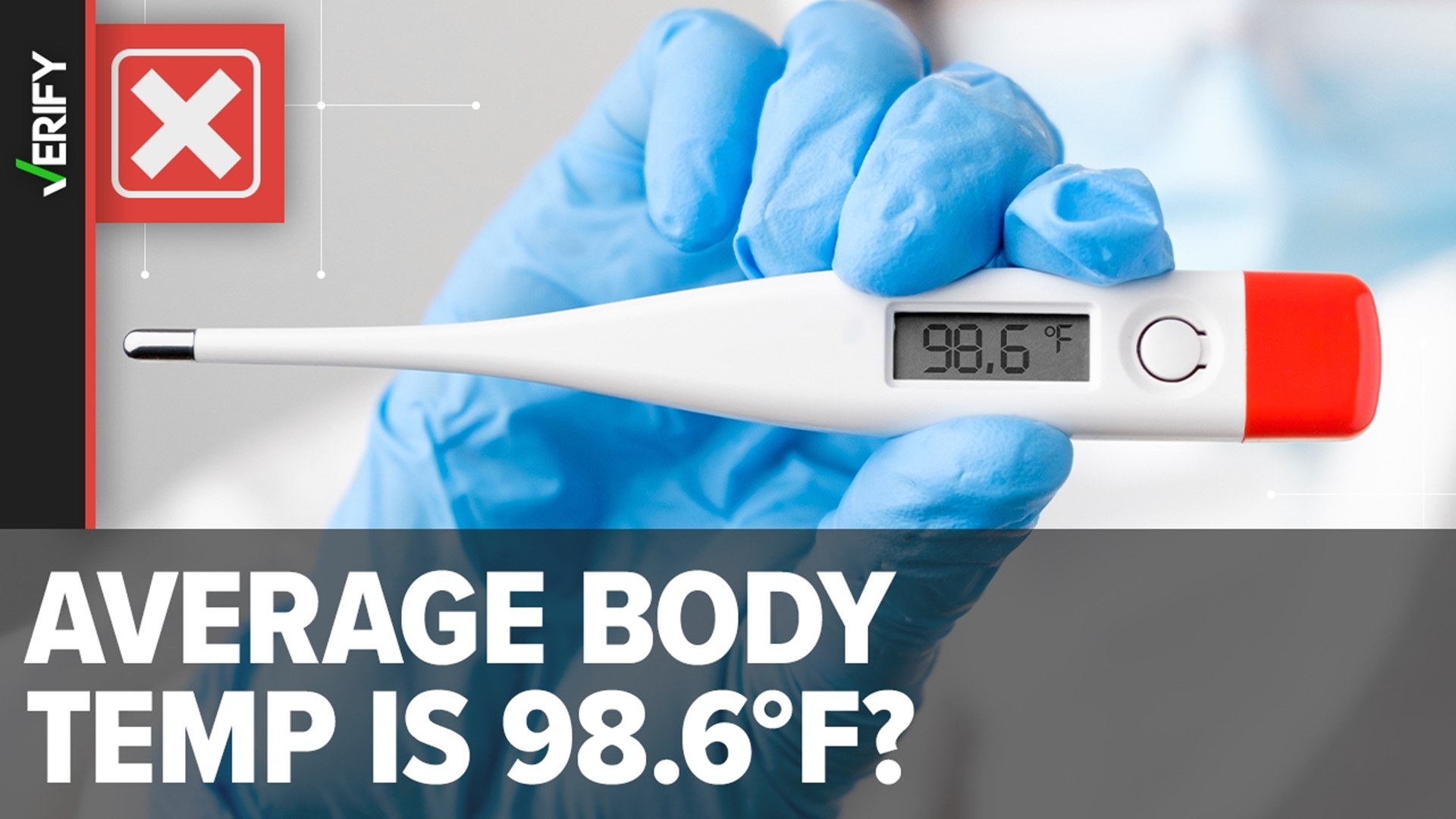Many people have heard from their parents or medical professionals that 98.6 degrees Fahrenheit is the average body temperature.
But social media posts claim that’s no longer the case. Google search trends also show people online are wondering whether 98.6 degrees is really a normal body temperature for everyone.
THE QUESTION
Is the average body temperature 98.6 degrees?
THE SOURCES
- Stanford Medicine article
- Harvard Health blog post
- 2017 study published in the BMJ
- 2020 Stanford Medicine study published in eLife
- 2023 Stanford Medicine study published in JAMA International
- Payal Kohli, M.D., assistant clinical professor of medicine at University of Colorado’s Anschutz Medical Campus
THE ANSWER
No, the average human body temperature is not 98.6 degrees. Recent studies have found it’s closer to 97.9 degrees
WHAT WE FOUND
Though normal body temperatures vary from person to person, it’s been widely accepted for more than 100 years that 98.6 degrees is the average temperature.
But studies show that the average has actually decreased in recent years and may be closer to about 97.9 degrees.
The often-cited “normal” temperature of 98.6 degrees comes from scientific data published more than 150 years ago.
In 1868, German physician Carl Reinhold August Wunderlich studied more than one million temperature measurements from about 25,000 people. He reported a range of temperatures, noting that some people had lower temperatures and temperatures were higher in the afternoon, but concluded the overall average was 98.6 degrees, Stanford Medicine says.
Researchers have drawn a different conclusion in more recent studies.
In a 2020 study published in eLife, researchers from Stanford University School of Medicine found the standard average temperature is lower than 98.6 degrees and has been decreasing over time.
The researchers looked at data from 1862 through 1930, 1971 through 1975, and 2007 through 2017. They found that body temperature decreased by 0.05 degrees every decade.
A different study from 2017 looked at temperature measurements from about 35,000 patients and found their average was around 97.9 degrees.
A Stanford Medicine study published in September 2023 analyzed oral temperature measurements from more than 126,000 people seen at Stanford Health Care from 2008 to 2017.
It found that adults have normal temperatures ranging from 97.3 to 98.2 degrees, with an overall average of 97.9 degrees.
Payal Kohli, M.D., assistant clinical professor of medicine at the University of Colorado’s Anschutz Medical Campus, and other medical experts believe there are a number of reasons the average body temperature has fallen in recent years.
One reason is a lower metabolic rate in modern times, which could be tied to “higher body mass, better medical treatments, preventive measures and overall health,” Robert Shmerling, M.D., wrote in a blog post for Harvard Medicine.
People also have better sanitation and living conditions now than they did in the 1800s, Kohli said.
When Wunderlich gathered his data in the 1800s, tuberculosis, syphilis, chronic gum diseases and other inflammatory conditions that can raise a person’s body temperature were common and treatments were limited, Schmerling added.
The latest research about body temperature also begs the question of whether medical providers should redefine a fever, Kohli said. Most medical providers say a fever is a body temperature of at least either 100 or 100.4 degrees, the Cleveland Clinic says.
But, if a person’s basal – or resting – temperature tends to run lower, they may begin to have a fever if they are below 100 degrees, since their body is warming up more than usual, Kohli explained.

